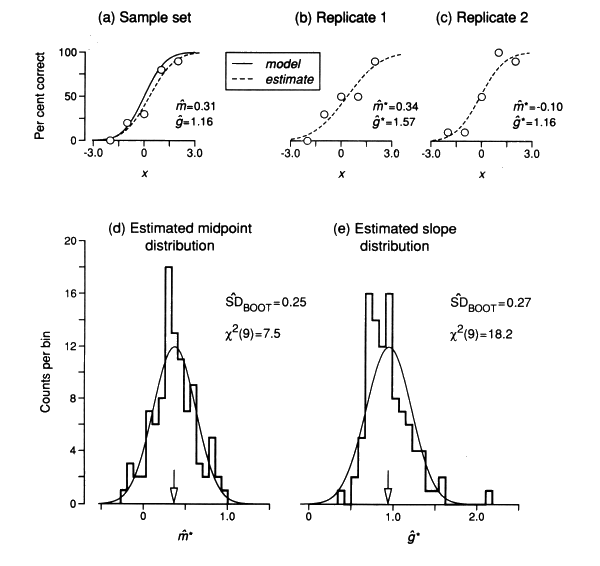1. Basics
The bootstrap provides a powerful, general procedure for estimating the accuracy of a statistical estimate derived from a set of experimental data. The illustration belows shows how bootstrap standard deviations are calculated from a sample psychometric function.

Panel (a) shows a model psychometric function (continuous curve) from which a sample set of data (open symbols) has been generated based on 10 trials at each x level. These data are intended to be typical of those obtained in practice; the model function thus represents the unknown, 'true' psychometric function. The broken line shows the best (maximum likelihood) estimate of the true function derived from the sample set, along with the resulting estimate of the midpoint m and slope g of the function.
Panels (b) and (c) show individual bootstrap replicates generated from the estimated psychometric function fitted to the sample set in (a). Notice the different values of midpoint and slope in the two replicates.
Panels (d) and (e) show histograms of the values of midpoint and slope obtained from 100 bootstrap replicates like those in (b) and (c). For comparison, the smooth curves are normal distributions with the same means and standard deviations as the bootstrap histograms. Their goodness of fit is shown by the chi-squared values.
For further details see Foster, D. H. & Bischof, W. F. (1991) Thresholds from psychometric functions: Superiority of bootstrap to incremental and probit variance estimators, Psychological Bulletin, 109, 152-159.
